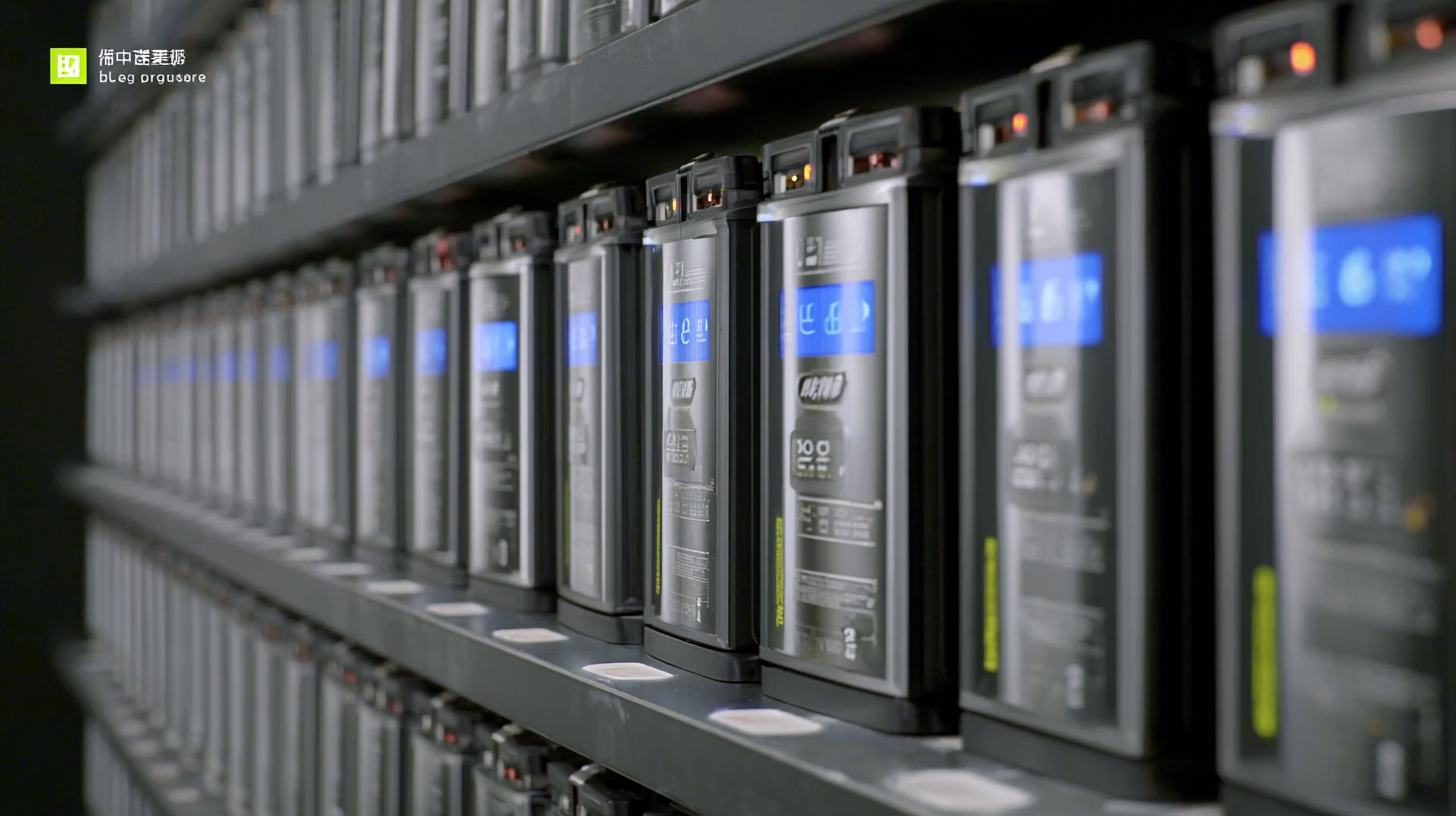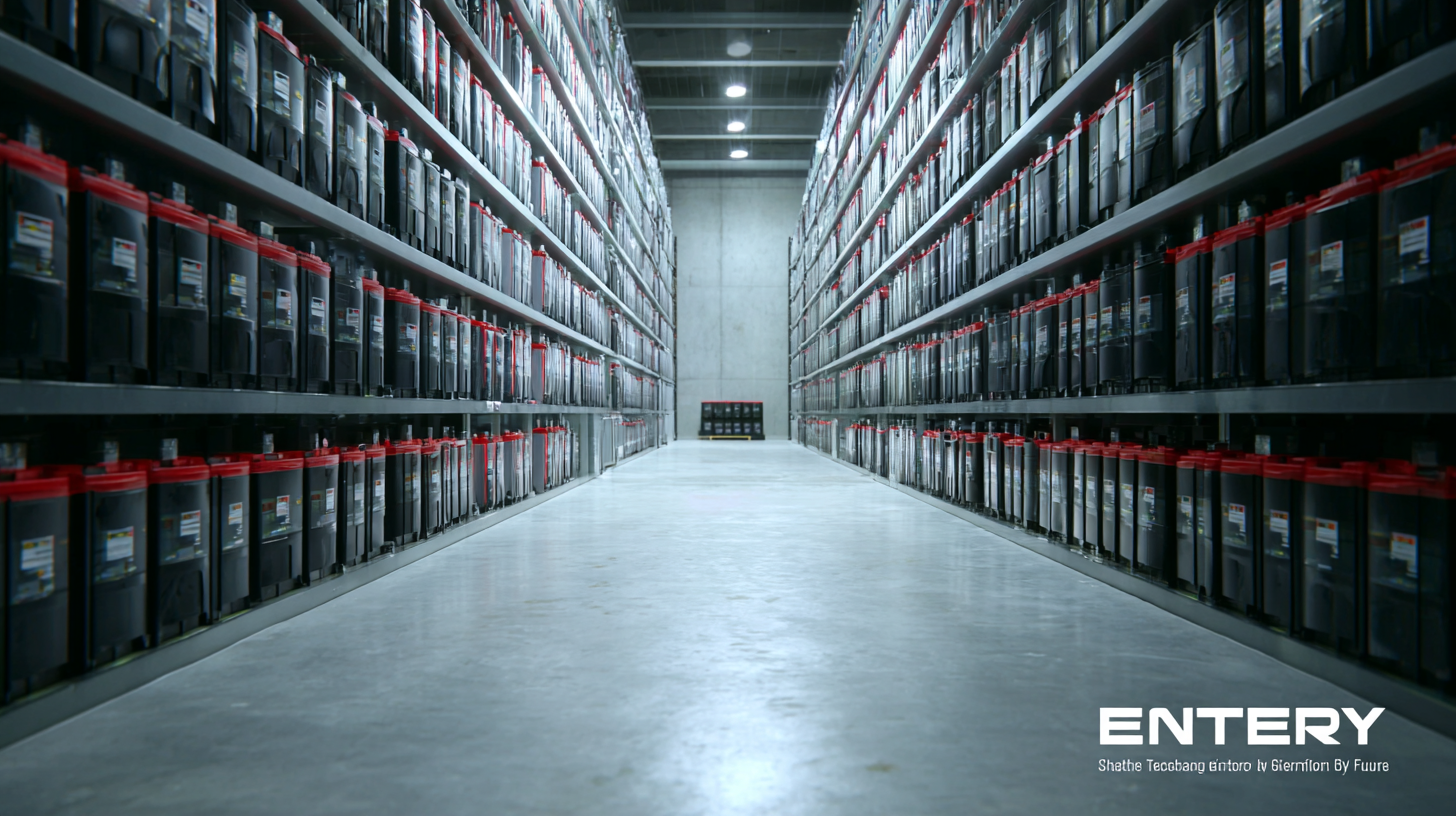Chinese Innovation in Best Battery Storage for a Reliable Global Future
As the world transitions towards a more sustainable future, the importance of effective Battery Storage solutions has never been more critical. According to a report by the International Energy Agency (IEA), global energy storage capacity is expected to exceed 600 gigawatt-hours (GWh) by 2040, with significant contributions from advancements in battery technology. By 2025, we are poised to witness rapid developments in energy storage systems, driven by innovation in lithium-ion and solid-state batteries, which promise higher efficiency and lower costs. This evolution not only enhances the reliability of renewable energy sources but also ensures energy security across regions. With China leading the charge in battery production and innovation, the potential benefits of these advancements are immense, paving the way for a more resilient energy infrastructure.

The Rise of Chinese Battery Innovations: A Global Perspective
The global battery market has witnessed a remarkable transformation, primarily driven by Chinese innovation. As countries around the world strive for sustainable energy solutions, Chinese companies have emerged as leaders in battery technology, spearheading advancements in energy density, charging speed, and overall efficiency. This surge in innovation is not only reshaping China's domestic energy landscape but also setting standards for international practices.
Chinese enterprises are leveraging extensive research and development, supported by substantial investments and government policies that prioritize green technology. As a result, innovations such as solid-state batteries and advanced lithium-ion technology have gained traction, paving the way for a more reliable energy storage future. These developments are crucial for facilitating the adoption of renewable energy sources globally, addressing issues of intermittency that have traditionally plagued solar and wind energy systems. With a growing emphasis on collaboration, Chinese innovations are being recognized and integrated into global energy strategies, emphasizing a unified approach toward sustainability.

Key Technologies Powering Chinese Battery Storage Solutions
As the world increasingly turns towards renewable energy sources, Chinese innovation in battery storage technology has emerged as a critical component for a reliable global future. Central to this development are several key technologies that are transforming how energy is stored and utilized. One of the most significant advancements is in lithium-ion battery technology, which has seen improvements in energy density and cycle life. These enhancements not only extend the lifespan of batteries but also make them more efficient for large-scale storage applications, paving the way for extensive deployments in electric vehicles and grid storage.
Another breakthrough comes from the use of solid-state batteries, which offer higher safety profiles and better performance compared to traditional liquid electrolyte batteries. This technology minimizes the risk of leaks and fires, addressing a major concern in battery safety. Furthermore, innovations in battery management systems (BMS) ensure optimal efficiency and longevity of battery packs by carefully monitoring and controlling the health of each cell. Together, these technologies not only position China as a leader in battery storage solutions but also contribute to a greener energy future, making renewable sources more viable and dependable for global energy needs.
Comparative Analysis: Chinese vs. Global Battery Storage Systems
The global battery storage market has seen exponential growth, with China leading the charge in innovation and deployment. According to a report by the International Energy Agency (IEA), Chinese companies dominate around 80% of the world's lithium-ion battery production. This significant market share can be attributed to the country's extensive investment in research and development, coupled with a robust supply chain for critical components such as lithium, cobalt, and nickel. In contrast, the rest of the world, particularly Europe and North America, struggles with limited local supply chains and higher production costs, which impede their ability to compete effectively.
A comparative analysis reveals that Chinese battery systems, particularly those developed by giants like CATL and BYD, have not only advanced in capacity but also in efficiency. A study by BloombergNEF notes that the cost of battery packs globally has fallen by more than 80% since 2010, with Chinese manufacturers achieving even lower prices due to economies of scale and vertical integration. Furthermore, China's focus on innovation in solid-state batteries could potentially leapfrog current technologies, providing a more reliable and longer-lasting energy storage solution. In contrast, while Western companies are making strides, their battery technologies often lag behind in terms of efficiency and sustainability, revealing a clear innovation gap that challenges their market positions.
Comparative Analysis of Battery Storage Capacity and Efficiency (Chinese vs. Global)
Future Trends in Battery Storage: Chinese Contributions to Sustainability
As the world pivots towards sustainability, battery storage has emerged as a pivotal technology in managing renewable energy sources. According to a report by BloombergNEF, global battery storage installations are expected to reach 1,000 GWh by 2030, with a significant portion of this capacity stemming from Chinese innovations. China's commitment to renewable energy and its dominance in lithium-ion battery manufacturing—holding over over 70% of the global market share—positions it as a leader in advancing battery storage technologies.

Case Studies: Successful Chinese Battery Projects and Their Global Impact
China has emerged as a global leader in battery storage innovation, significantly influencing energy sustainability worldwide. A prime example is the success of the Ningde时代 (CATL), which became the largest electric vehicle battery manufacturer in the world, accounting for over 30% of the global market share. Their development of lithium iron phosphate batteries, which are not only safer but also cheaper, has set a benchmark for efficiency and longevity. According to the International Energy Agency, battery storage capacity is expected to reach 5,000 GWh by 2040, with Chinese companies spearheading this growth.
One standout project is the 800 MW battery storage facility in Hubei, which serves as a testament to China's commitment to renewable energy integration. By effectively storing excess solar and wind energy, this project not only enhances grid reliability but also reduces reliance on fossil fuels. The Chinese government has earmarked over $15 billion for battery storage initiatives, reflecting their aggressive strategy to lead the energy transition. Such projects are not just national achievements; their technologies are being exported globally, impacting markets from Europe to Africa and promoting a greener, more sustainable future.
Chinese Innovation in Best Battery Storage for a Reliable Global Future
| Project Name | Location | Storage Capacity (MWh) | Technology Used | Impact on Local Grid |
|---|---|---|---|---|
| Project A | China | 100 | Lithium-ion | Enhanced load management |
| Project B | Germany | 200 | Flow Battery | Increased renewable integration |
| Project C | United States | 150 | Solid State | Sustainable energy supply |
| Project D | Australia | 250 | Nickel-Manganese-Cobalt | Improved grid resilience |
